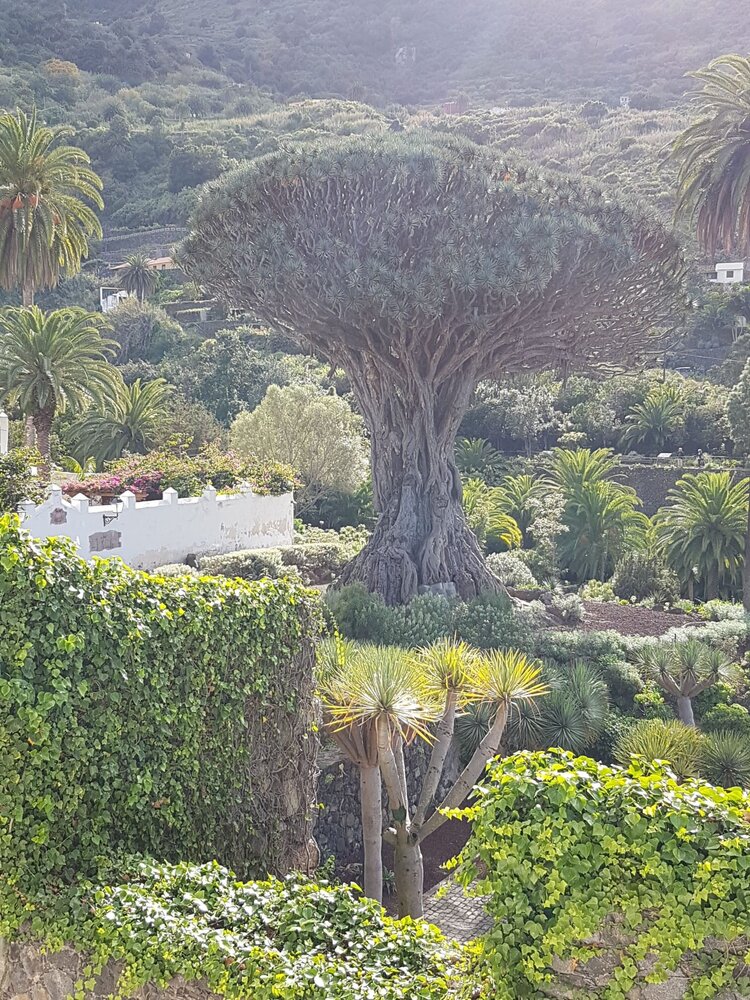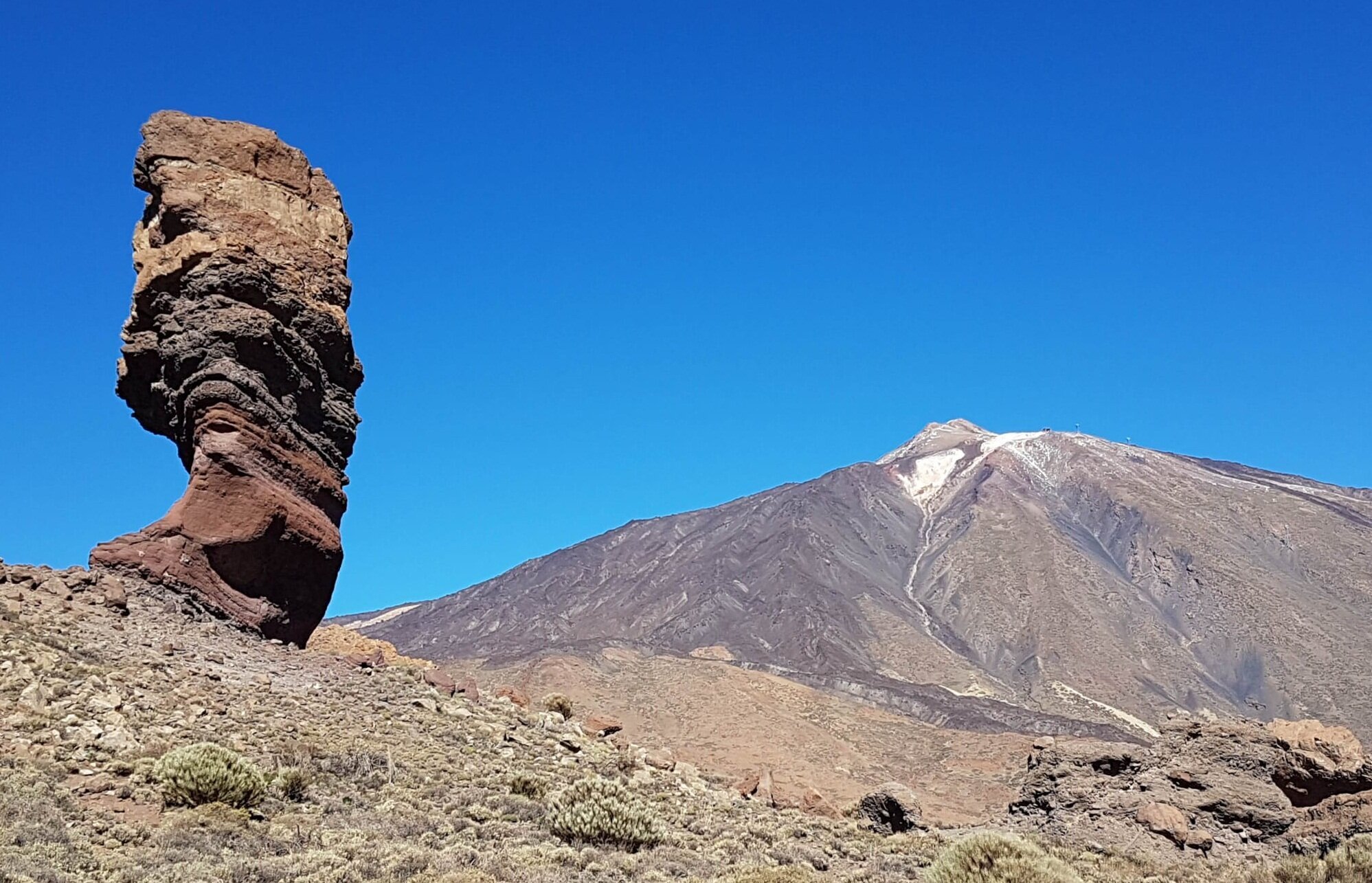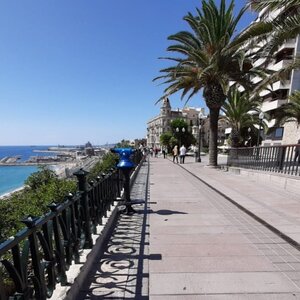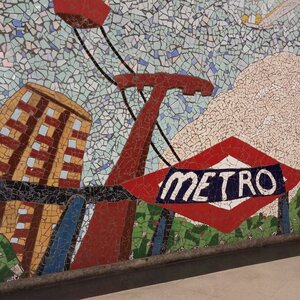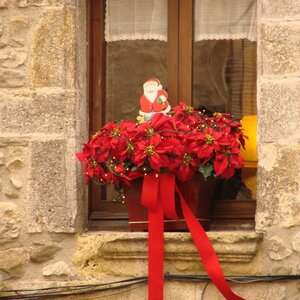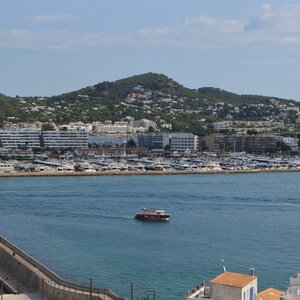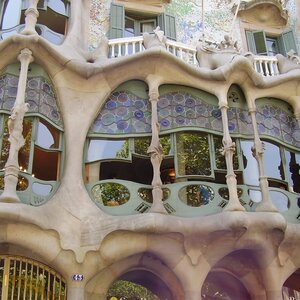In Tenerife be sure to visit local beaches, amusement parks and the center of the island — Teide volcano. I will tell you about the cities and natural attractions of the island separately.
Natural attractions of Tenerife
The main natural attraction of Tenerife is the Teide volcano and the reserve that surrounds it. In addition to it, I recommend visiting three unusual places created by nature.
Cliffs of Los Gigantes (Acantilado de Los Gigantes)
In the southwest of Tenerife along the ocean are the steep volcanic cliffs of Los Gigantes, ranging from 300 to 600 meters high. The Guanches (the people who lived on Tenerife before the Spanish conquered it) called these cliffs the «Devil’s Wall». You can see them from the observation deck of Los Gigantes or from the ocean.
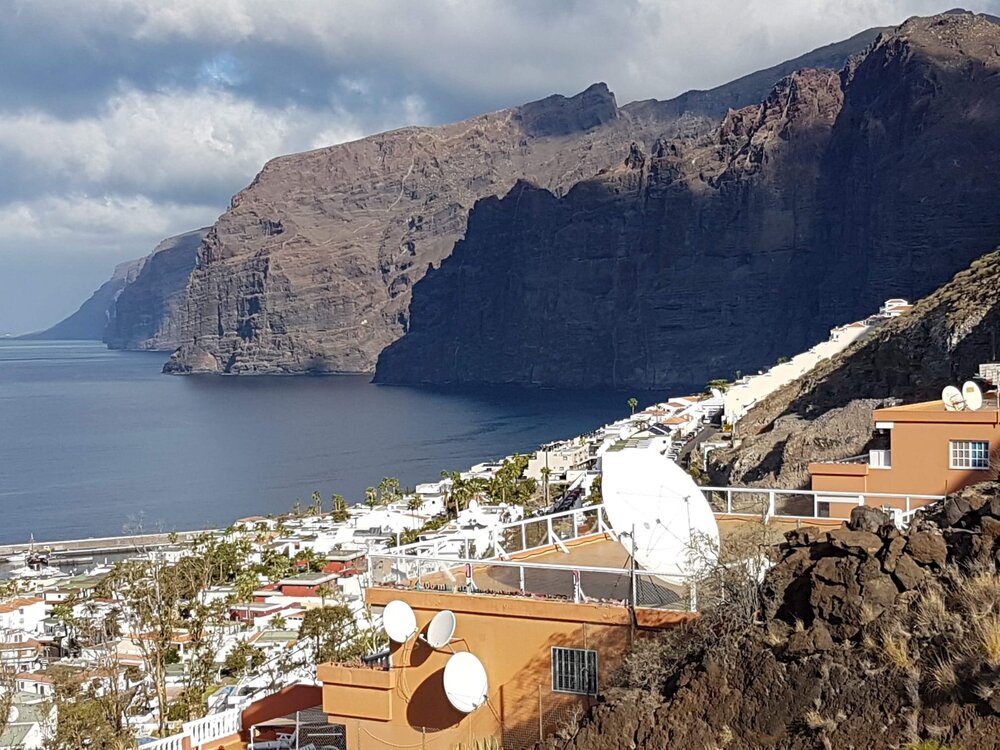
Masca village (Masca)
The road to this village is the narrowest and most winding on the island. It was built only in the middle of the 20th century, and before it was possible to reach Masca only by mountain trails. The village is inhabited by 120 people, mostly descendants of the Guanches who once hid in the valley from the Spanish.
On the way to the village there are lookout points with views of the Masca Gorge, the Los Gigantes Mountains, the ocean and the neighboring island of La Gomera. From the village to the ocean there is a popular 5km hiking trail through the gorge, caves and black sand beaches.
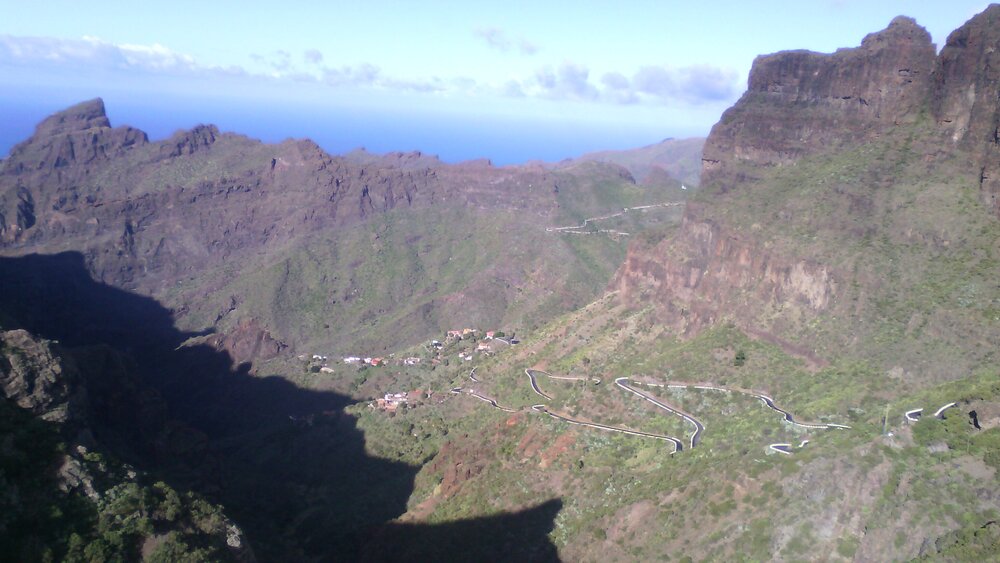
Anaga Natural Park (Parque Rural de Anaga)
This mountain range in the north-east of Tenerife is more than 7 million years old. The maximum height of the mountains is 1024 meters. Relict forests have been growing here since the Ice Age. Such ancient forests with a large number of rare plant species can only be seen in Madeira and the Canary and Azores Islands.
Capital of Santa Cruz de Tenerife (Santa Cruz de Tenerife)
Santa Cruz de Tenerife was a port village until 1723, when La Laguna was the capital of the island, and now it is the largest port city of Tenerife and one of the two capitals of the Canary Islands. The second capital, Canary, came into being in 1927. Since then, every four years the capital status from Santa Cruz is transferred from Santa Cruz to Las Palmas de Gran Canaria and back again. Along with the capital, the board of the Canary Islands also moves.
St. Croix has more than 220,000 inhabitants. Every year in February, the city hosts Carnival, the second most popular and largest in the world after Rio de Janeiro.
Plaza de Espana
In the center of the city is the Plaza de España, the largest square in the Canary Archipelago, now 90 years old. In the center of the square is the Monument to the Fallen of the Civil War and a large fountain with sea water.
Auditorio de Tenerife Concert Hall (Auditorio de Tenerife)
The modern concert hall building was built in 2003 and externally resembles the famous opera house in Sydney. It houses a chamber hall with a capacity of 422 spectators and a symphony hall with 1616 seats. Symphonic and jazz concerts and opera performances are held here.
- Concert hall site where you can purchase tickets for concerts and opera.
García Sanabria Municipal Park (Parque García Sanabria)
This largest park in the Canary Islands was created in 1926 on an area of 67,000 square meters. There are hundreds of species of tropical plants, parrots in the trees and fish in the ponds. On the territory there are fountains, gazebos and terraces. This is the best place in the city for recreation! At the entrance from Pilar Street there is a floral clock, the mechanism for which was brought from Switzerland.
- The park is open 24 hours a day, and admission is free.
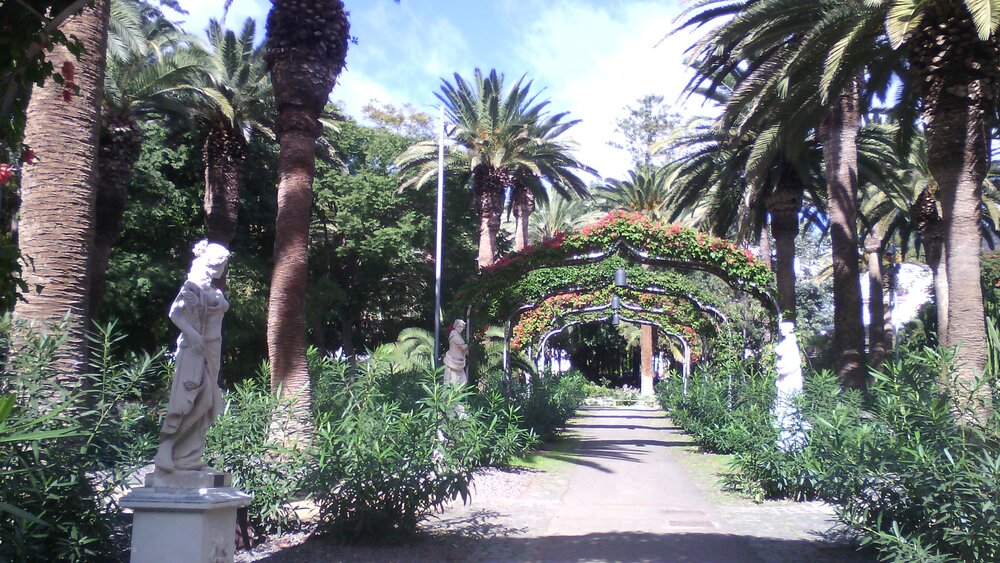
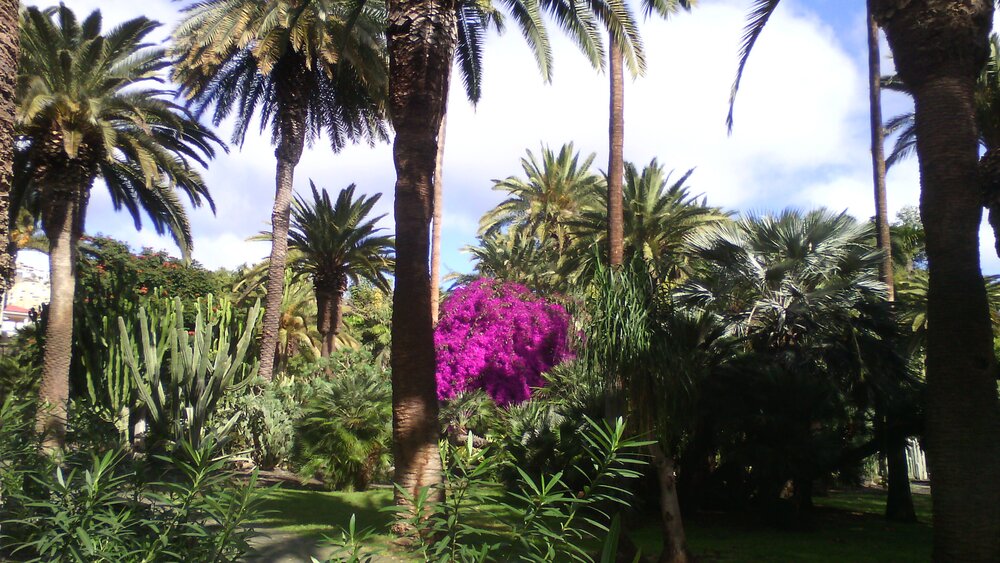
Museum of Nature and Man (Museo de Naturaleza y Arqueología)
The museum opened in 1958 in a neoclassical building of the former city hospital. It contains exhibits from before the Spanish conquest, when Tenerife was inhabited by the Guanches. In the museum you can see the remains of prehistoric animals, mummies of Guanches, archaeological artifacts.
- Mode of operation: Tuesday — Saturday from 9:00 to 20:00; Monday, Sunday and holidays from 10:00 to 17:00.
- Free admission on Friday and Saturday from 16:00 to 20:00, if these days are holidays, from 13:00 to 17:00.
- Admission: adults — 5 €, students and pensioners — 3,5 €, children under 8 years old — free of charge.
- Website of the Museum of Nature and Man
Museo Municipal de Bellas Artes (Museo Municipal de Bellas Artes)
In 14 exhibition halls of the museum works of art of XVI–XX centuries are presented: Flemish tapestries, sculptures, paintings of Spanish and Canarian artists.
- Mode of operation: Monday — weekend, Tuesday — Friday from 10:00 to 20:00, weekends from 10:00 to 15:00 (in July — September until 14:00).
- Admission is free.
- The museum’s page on the Santa Cruz City Hall website.
La Laguna (San Cristobal de La Laguna)
La Laguna is the second largest city of Tenerife and its former capital, founded in 1496 after the Spanish conquest of Tenerife. The aristocracy and clergy lived here, so the city is interesting for its luxurious architecture, preserved from the time of its founding. The central historic part of La Laguna is a UNESCO World Heritage Site.
Cathedral (Catedral de San Cristóbal de La Laguna)
La Laguna is home to the main church of Tenerife, where Alonso de Lugo, the conqueror of the island, is buried. The church was built in the early 16th century and has been rebuilt several times since then. The modern neo-Gothic building of the cathedral was built from 1904 to 1913 from concrete. The church is interesting for its main chapel, the pulpit made of Carrara marble, sculptures and religious paintings. The 18th century altar is preserved from the previous church building.
Entrance tickets to the temple include an audio guide in five languages, including English and Spanish. There is no audio guide in Russian.
- Mode of operation: Monday — Friday from 10:00 to 20:00 (summer) and from 10:30 to 18:30 (winter), Saturday from 10:00 to 12:30 and from 14:00 to 17:00, Sunday — closed.
- Admission: adults — 5 €, pensioners over 65 — 4,5 €, children from 13 to 18 and students — 3,5 €, disabled people and children under 13 — free of charge, without audio guide.
- Cathedral website
Museum of History and Anthropology (Museo de Historia y Antropologia de Tenerife)
The museum consists of three parts, one of which is located in La Laguna and occupies the 16th century mansion «Sede Casa Lercaro», formerly owned by an Italian merchant. The exposition of the museum tells the history of the island from the time of colonization.
- Mode of operation: Tuesday — Saturday from 9:00 to 20:00; Monday, Sunday and holidays from 10:00 to 17:00.
- Admission: adults — 5 €, students and pensioners — 3,5 €, children under 8 years old — free of charge.
- You can visit the museum for free on Friday and Saturday from 16:00 to 20:00, if these days are holidays, from 13:00 to 17:00.
- Museum of History and Anthropology website
Candelaria.
Candelaria is a small town on the ocean and the religious capital of the island. Here, on the night of August 14—15, the Christian patroness of the Canary Islands is celebrated. In the center of the city there is a basilica, and in the square in front of it there are sculptures of nine Guanche kings, who ruled the lands of Tenerife before its conquest by the Spaniards.
Basilica de la Candelaria (Basilica of Candelaria)
It houses a statue of Our Lady of Candelaria, the patron saint of the Canary Islands, to which more than two million pilgrims visit each year.
The main relic of the Basilica is a copy of the statue of the Black Virgin Mary. According to legend, the statue was carried away by the ocean back in 1390, when only Guanches lived on the island and they began to worship her. The original statue was carried away by the ocean during a storm in 1826.
- Hours of operation are Monday through Friday from 7:30 a.m. to 1 p.m. and 3 p.m. to 7:30 p.m., weekends from 7:30 a.m. to 7:30 p.m.
- Admission is free.

La Orotava.
La Orotava is a small town surrounded by a fertile valley where bananas and grapes are grown. The town has an interesting historical center, where you can see houses of XVII–XVIII centuries in the traditional Canarian style and botanical gardens.
Casa de los Balcones (House with Balconies)
The Balcony House is a three-story building with carved pine balconies built in 1760. The first floor is now a craft shop where you can buy local souvenirs. And on the second floor there is a museum of the life of wealthy citizens of Tenerife of the XVII century.
- Working hours: daily from 8:30 to 19:00.
- Admission: adults — 5 €, students — 2,5 €, children under 12 years old — free of charge.
- You can buy a ticket online at the museum’s website.
Jardínes del Marquesado de la Quinta Roja or Victoria Gardens (Jardínes del Marquesado de la Quinta Roja)
The Masonic-style private garden was created in the late 19th century and spread over seven terraces. On the highest level there is a marble mausoleum, where the Marquis De La Quinta Roja was planned to be buried, but eventually abandoned the idea. Since 1991, the Victoria Gardens have belonged to the municipality of Orotava and admission is free.
- Working hours: Monday — Friday from 9:00 to 18:00, weekends from 10:00 to 15:00.
Icod de los Vinos (Icod de los Vinos)
Icod de los Vinos was founded by the Spanish in the 15th century. The town makes its money from winemaking, and the main attraction is a dragon tree, 17 meters high. The age of this huge dracaena is not known — it has no annual rings. But it is known that at the time of the conquest of the island the tree was already there, so scientists believe that it is at least 800 years old.
- You can approach the tree for 5 € or watch for free from the side.
Besides the ancient dracaena and wine, the town is interesting for its butterfly museum and traditional Canarian-style houses.
